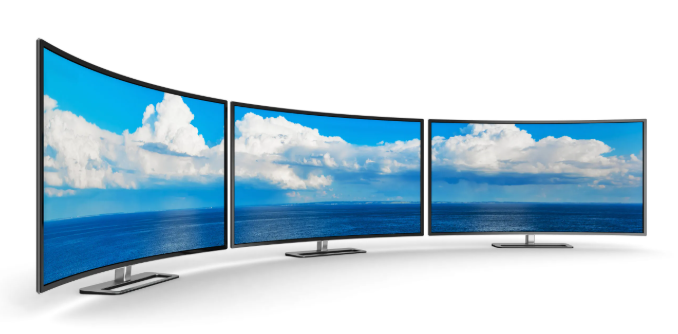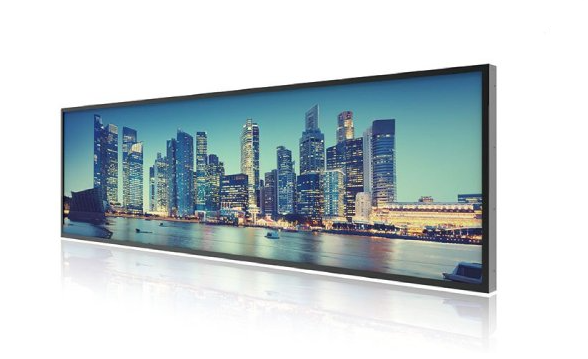Jul. 11, 2025
Liquid crystal displays (LCDs) are mainly divided into three types: transmissive, transflective, and reflective, depending on their optical structures. They differ significantly in display principles,
applicable environments, and power consumption, and are suitable for different application scenarios.
1. Transmissive LCD
(1) Working principle Transmissive LCD completely relies on backlight (such as LED or CCFL) to emit light. After the light passes through the liquid crystal layer, the color filter forms an image.The liquid crystal molecules control the amount of light passing through through voltage, thereby adjusting the brightness and color.
(2) Features Advantages: high brightness, bright colors, good contrast, suitable for high-definition display. Disadvantages: high power consumption, poor visibility under strong light (such as
outdoor sunlight), and the backlight brightness must be increased to see clearly.
(3) Application solutions Mainly used for indoor high-definition display devices, such as: - TV, monitor (LCD/LED TV, computer monitor) - Laptop, tablet computer - Medical display (requires
high contrast and color accuracy)

2. Transflective LCD
(1) Working principle Transflective LCD combines the two modes of transmission and reflection. A transflective film is installed inside the LCD panel: - Strong light environment: mainly relies
on reflecting external light to display, reducing backlight dependence. - Low light environment: turn on backlight assistance to enhance visibility.
(2) Features - Advantages: strong adaptability, can be used indoors and outdoors, and saves more power than pure transmissive type. - Disadvantages: complex structure, high cost, and color
performance is not as good as pure transmissive type.
(3) Application solutions Applicable to equipment that needs to be used both indoors and outdoors, such as: - Outdoor smart devices (industrial PDA, handheld terminals) - Early smart phones
(such as some outdoor three-proof mobile phones) - Car dashboards (need to adapt to different lighting conditions)

3. Reflective LCD (Reflective LCD)
(1) Working principle Reflective LCD has no backlight and relies entirely on ambient light reflection to form an image. There is a reflective layer (such as a metal reflective film) on its surface.
After the external light enters the liquid crystal layer, it is reflected back to the human eye to form an image.
(2) Features - Advantages: ultra-low power consumption, excellent visibility in sunlight, suitable for long-lasting devices.- Disadvantages: almost invisible in dim light, poor color and contrast.
(3) Application solutions are mainly used for low-power devices in outdoor strong light environments, such as: - Electronic ink screen (E Ink) (such as Kindle e-books) - Calculators, electronic
labels (ESL) - Smart watches (some low-power models)
4. Comparison of the core differences between the three
| Features | Transmissive LCD | Transflective LCD | Reflective LCD |
| Light source dependence | Full dependence on backlight | Ambient light + backlight assistance | Depends on ambient light only |
| Power consumption | High | Medium | Very low |
| Visibility | Excellent indoors, poor outdoors | Balanced indoors and outdoors | Excellent in sunlight, poor in low light |
| Color performance | Best (bright, high contrast) | Medium | Poor (usually monochrome) |
| Cost | Low | High | Low (simple structure) |
| Typical applications | TV, monitor | Outdoor smart devices | E-book, e-label |
5. Development Trends
- Transmissive LCD is still the mainstream and widely used in consumer electronics, but with the popularity of OLED, some high-end markets have been replaced.
- Transflective LCD is still in demand in outdoor devices, but the flexibility and high contrast characteristics of AMOLED have gradually replaced it.
- Reflective LCD continues to develop in low-power areas (such as e-paper) and may be further popularized in Internet of Things (IoT) devices in the future.
Conclusion:
Which LCD to choose depends on the use environment, power consumption requirements and display effect:
- High image quality requirements → Transmissive
- Indoor and outdoor considerations → Transmissive reflective
- Ultra-low power consumption, strong outdoor light → Reflective
Different technologies are suitable for different scenarios. In the future, with the maturity of new technologies such as Micro LED and OLED, the application of LCD may be further adjusted,
but it is still an important part of the display market.
+0086 755 21042870
+0086 755 2822 5493
Shenzhen Company: 5/F, Building 211, Tairan Science Park, Tairan 4th Road, Shatou Street, Futian District, Shenzhen(518040), China.
Dongguan Factory: 2/F, Building D, Fulin Industrial Park, Weixi Road, Dalingshan Town, Dongguan City(523831), Guangdong,China
NAVIGATION
REQUEST A QUOTE